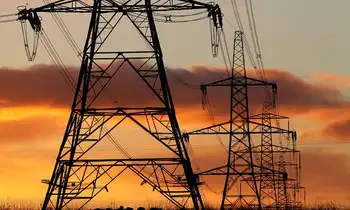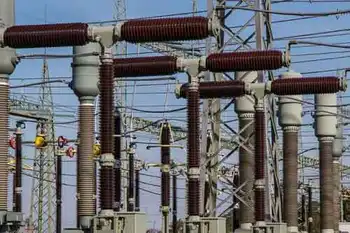Georgia Power outlines plan to meet electricity needs
ATLANTA -- - Georgia Power outlined its plans to continue to meet the state's electricity needs reliably and affordably in its Integrated Resource Plan IRP, filed today with the Georgia Public Service Commission PSC.
Georgia Power is required to file an IRP every three years, and may also file updates when necessary. The filing outlines the company's 20-year resource plan, and details how it will meet future customer energy needs in an economical and reliable manner.
Included in the IRP are projections of future fuel costs load and energy forecasts an analysis of currently available generation technologies the 10-year transmission plan and an economic assessment of potential and proposed energy efficiency and demand response, also known as demand-side management DSM programs.
"We are committed to meeting the energy demands of our customers in the most reliable and affordable way possible," said John Pemberton, Georgia Power senior vice president of Generation and senior production officer. "The IRP process ensures we keep that commitment as we undergo a historic transition to our generating fleet, which includes natural gas, 21st-century coal, new nuclear, renewables and energy efficiency."
As part of today's filing, Georgia Power is requesting to decertify and retire 15 coal- and oil-fired generating units totaling 2,061 megawatts MW: Units 3 and 4 at Plant Branch in Putnam County units 1-5 at Plant Yates in Coweta County units 1 and 2 at Plant McManus in Glynn County and units 1-4 at Plant Kraft in Chatham County and Boulevard units 2 and 3, also in Chatham County. In addition, the company is requesting to decertify and sell Plant Bowen Unit 6, which has a rating of 32 MW, bringing the total of retired capacity to 2,093 MW.
Units 3-4 at Branch, units 1-5 at Yates and units 1-3 at Kraft are coal-fired generating units. Kraft Unit 4 is oil-/natural gas-fired, and McManus units 1-2 are oil-fired. Bowen Unit 6 is an oil-fired combustion turbine that is only permitted to operate during non-summer months due to ozone non-attainment requirements.
The company expects to ask for decertification of the units, other than Kraft units 1-4, Bowen Unit 6 and Boulevard units 2 and 3 by the April 16, 2015 effective date of the U.S. Environmental Protection Agency's EPA Mercury and Air Toxics MATS rule. The company expects to seek a one-year extension of the MATS compliance date for Plant Kraft, and retire those units by April 16, 2016. The company is asking the PSC to grant the decertification of Bowen Unit 6 by April 16, 2013, to facilitate the sale of the unit, and is seeking decertification of Boulevard units 2 and 3 effective as of the date of the final order in the IRP.
Also, Georgia Power will request converting units 6 and 7 at Plant Yates from coal to natural gas, and will switch from burning Central Appalachian coal to burning Powder River Basin coal at Plant McIntosh Unit 1, pending a successful test burn and further study. As part of the company's MATS compliance strategy, it will install two baghouses at Plant Bowen units 3 and 4, and will use an activated carbon and hydrated lime injection system on units 1-4 at Bowen, and all units at Plant Hammond and Plant Wansley.
The installation of these controls is part of Georgia Power's more-than-$5 billion environmental construction program. The company is installing scrubbers, Selective Catalytic Reduction units, baghouses and other controls at its coal-burning plants to decrease emissions of sulfur dioxide, nitrogen dioxide and mercury.
As part of the IRP, the company continues to demonstrate its firm commitment to identify all cost-effective renewable resources to benefit customers, with 1,088 MW of hydro generation, 63 MW of solar generation and 142 MW of biomass generation in service or under contract today. By the end of 2016, the company expects to have more than 1,500 MW of renewable generation available to serve customers.
With the Georgia Power Advanced Solar Initiative GPASI, the company continues to obtain an increasing amount of solar resources as declining technology prices have made them more cost competitive. GPASI builds on the solar resources already added to the portfolio by the company through the Large Scale Solar program and the Green Energy program.
After all resources are added through the GPASI, the company expects to have 270 MW of solar capacity under contract in Georgia. That will be the largest solar portfolio for any investor-owned utility that operates in a state without a renewable portfolio standard. The company also continues to engage in research and development efforts to gain more insight into the potential for further utilization of solar resources in the state of Georgia.
The company's current DSM portfolio consists of demand response programs, energy efficiency programs, pricing tariffs and other activities. The company projects that by 2016, these programs will reduce peak demand by approximately 2,000 MW. In addition, the company plans to expand the DSM portfolio in 2013 by certifying a Small Commercial program and enhancing existing programs.
Georgia Power is in the midst of a transition to its generating fleet that will provide economic benefits to customers for generations. That includes new, highly-efficient natural gas generation at Plant McDonough-Atkinson two new state-of-the-art nuclear facilities at Plant Vogtle 21st-century coal energy efficiency and renewables.
The PSC is expected to vote on the company's IRP request in the summer of 2013.
Georgia Power is the largest subsidiary of Southern Company, one of the nation's largest generators of electricity. The company is an investor-owned, tax-paying utility with rates below the national average. Georgia Power serves 2.4 million customers in all but four of Georgia's 159 counties.
Related News

Next Offshore Wind in U.S. Can Compete With Gas, Developer Says
WASHINGTON - Massive offshore wind turbines keep getting bigger, and that’s helping make the power cheaper — to the point where developers say new projects in U.S. waters can compete with natural gas.
The price “is going to be a real eye-opener,” said Bryan Martin, chairman of Deepwater Wind LLC, which won an auction in May to build a 400-megawatt wind farm southeast of Rhode Island.
Deepwater built the only U.S. offshore wind farm, a 30-megawatt project that was completed south of Block Island in 2016. The company’s bid was selected by Rhode Island the same day that Massachusetts picked Vineyard Wind…




